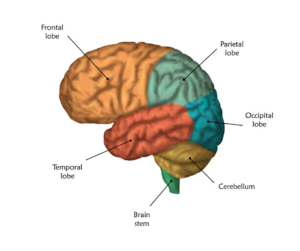Visualisation is a process of creating a mental image of a future event.
In essence, it is using our imagination to create a vision of what we want.
They say seeing is believing. Well, everything begins with thought and we must see it in our mind before we can believe it in front of us.
The “seeing” part is what motivates and prepares us to pursue our goal.
Visualisation is not simply “think it and you will be it”. It is not wishful thinking; it is actually purposeful.
And there is real scientific evidence to support how and why it works.
First, let us consider the benefits. Visualisation can prove to be very productive in terms of the end result, but it also has some ancillary benefits.
Visualisation is a relaxing process. It is recommended that you try visualisation when you are calm and comfortable. In this state, the technique of closing your eyes and imagining what you desire naturally produces alpha waves in the brain, which induces further relaxation, and reduces pain, stress, and anxiety.
Visualisation influences the sub-conscious. Imagining yourself in new circumstances effectively implants new memories in your brain, which influences your current self-image.
Visualisation increases confidence. In visualising new circumstances, you are exercising mental practice, making the unfamiliar familiar and making you feel like the success is real. As you feel successful, so your confidence grows.
Visualisation increases focus and desire. The brain becomes selective about which information to process and effectively blocks out sensory information that does not relate to your desire. You see that which you wish to see.
Visualisation improves self-image. Any impressions you have of being successful, real, or imagined, has the effect of making you feel happier, more confident, and entirely capable.
What if you struggle with visualisation?
You might find it difficult to create unseen mental images in your mind. However, your brain is actually built to envisage virtually any thought you have. In fact, you have an innate ability to visualise almost anything and even though it might feel hard to you at first, like anything, if you practice, your ability to visualise will develop in time.
So, what’s the science?
When you begin visualising something, as you would imagine, the process starts in the occipital lobe. This is the visual cortex of the brain.

Once the thoughts and visions have been held and practised for some time, the next part of the brain to be stimulated is the parietal lobe. This takes care of all your images of self and so that starts to change the emotions and the physical sensations in relation to your sense of self.
And as that starts to change, the frontal lobe is affected. This is the part of the brain which has to do with your thoughts and your actions. So, processing your new vision eventually plays out in your in your habits and lifestyle choices.
According to research using brain scan imagery, when we visualise aspects of the brain literally light up! Visualisation works because neurons in our brain - the electrical excitable cells that transmit information throughout the brain - interpret the imagery as equivalent to real-life action. In other words, the brain cannot distinguish whether you are imagining it or actually doing it.
A neat way to illustrate this is to show the results from sports science research.

In a landmark study, Dr. Judd Biasiotto, a sports psychologist at the University of Chicago split a student sample into three groups and tested them on their basketball skills. He recorded the results of each group on how many free throws they could make.
After this, he had the first group practice free throws every day for an hour.
The second group were asked to just visualise themselves making free throws.
The third group were asked to do nothing.
After 30 days, Dr Biasiotto tested them again.
The first group improved their free throw percentage by 24%. The second group improved by 23%, without touching a basketball! The third group did not improve, which was expected.
The study concluded that visualisation improves sports performance, but the exciting element was pondering the impact of a combination of practice and visualisation.
Visualisation establishes new neural pathways in the brain. These then act like a blueprint to be followed in the actual performance of the imagined event. And so, in visualising, you are making the unfamiliar familiar. This is particularly useful in business when preparing for an interview or presentation, as it reduces anxiety and builds confidence.
The strength of the neural connection is directly proportional to the intensity of your imagination. It is the feeling that strengthens the connection.
When you imagine something pleasing and emotionally powerful, there is a part of the brain, the nucleus accumbens that is activated. This part of the brain is involved in pleasure, reward, and motivation, (also fear, addiction and impulsivity). Activating this part of the brain does not mean whatever you want will magically appear. What is does mean is that you are more likely to be motivated and more likely to take goal-oriented actions.
When you visualise, the nucleus accumbens gets a shot of dopamine and it is this chemical boost which will help you to go and do what you need to do to create the circumstances for you to achieve what it is you want to achieve.
Remember, the feeling is the secret.
If you are not feeling it, you are not going to be creating that dopamine hit in the in the brain. There is nothing to generate that that surge of electricity that will fire the neurons together to connect those new neural pathways. When you visualise, your feeling about what you desire drives it all.
So, when you are visualising what you want for your business, as Stephen Covey says, “Start with the end in mind”. Envisage what you want, embrace the feeling of having it and then take whatever action you are inspired to do to help you achieve it. Oh, and have fun along the way!


